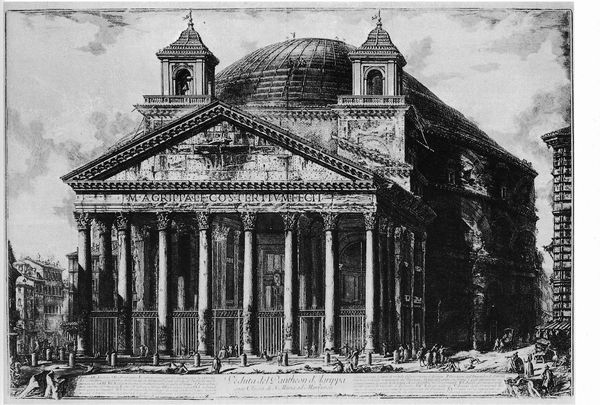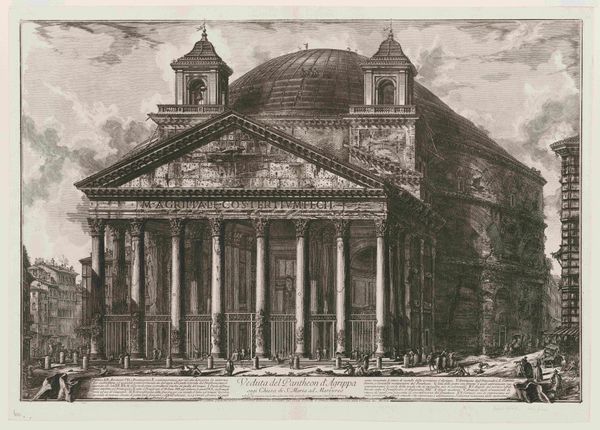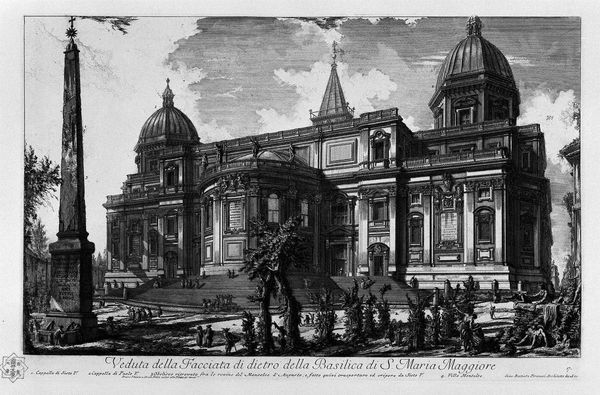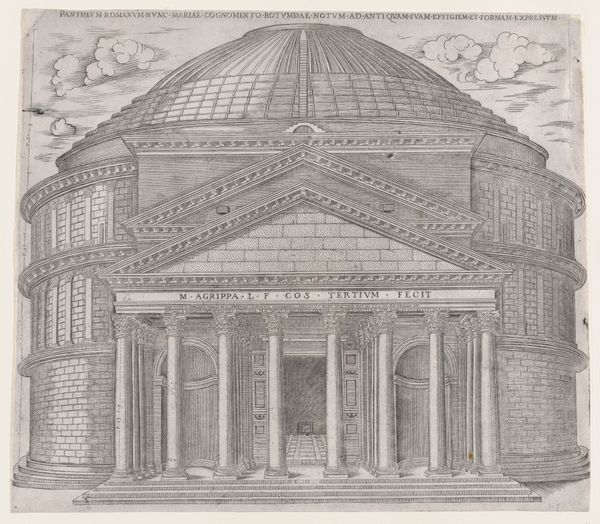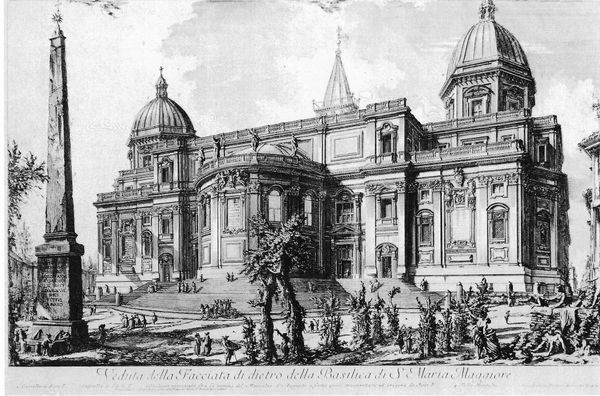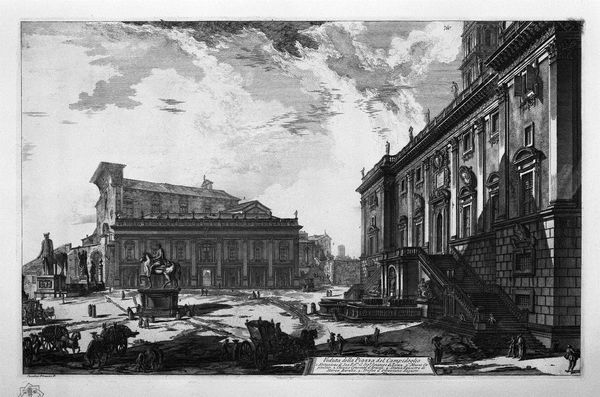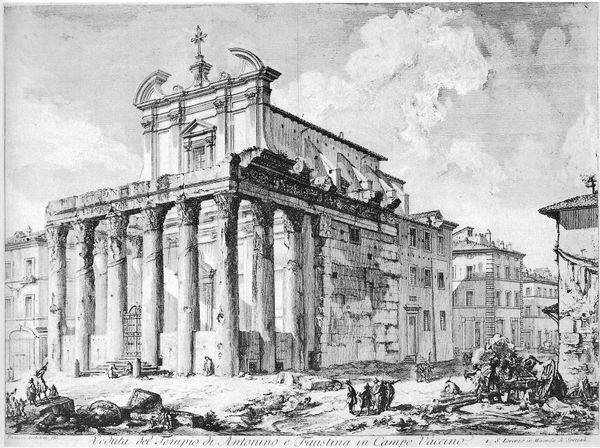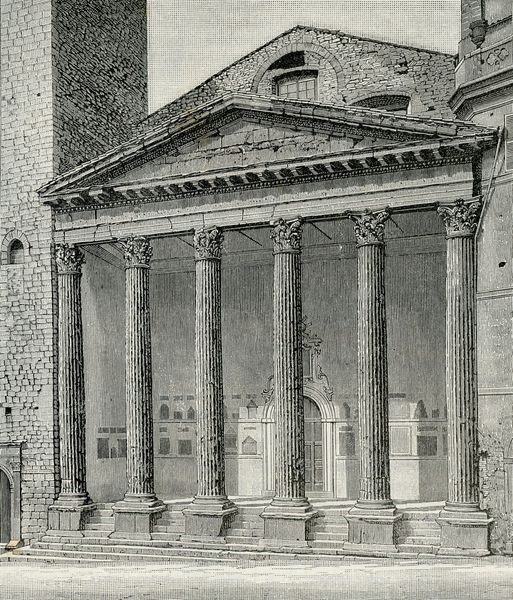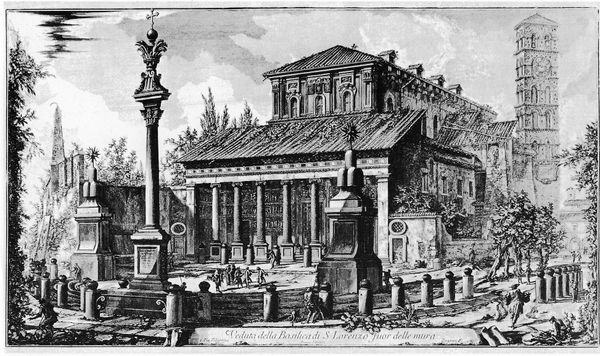
drawing, print, engraving, architecture
#
drawing
#
neoclacissism
# print
#
sculpture
#
landscape
#
geometric
#
line
#
cityscape
#
history-painting
#
italian-renaissance
#
engraving
#
architecture
#
building
Copyright: Public domain
Editor: This engraving, titled "View of the Pantheon of Agrippa" by Giovanni Battista Piranesi, really grabs my attention. There’s something monumental and slightly intimidating about the way it’s presented. How would you interpret the scene? Curator: The image offers a perspective on the public role of ancient architecture, particularly as filtered through 18th-century eyes. Consider the context: Piranesi was working during a time when Rome was being rediscovered, becoming a key destination for the Grand Tour. His prints weren't just architectural records but were active participants in shaping a neoclassical aesthetic and a sense of cultural lineage. How do you think his choices about light and shadow influence our reading of the Pantheon itself? Editor: I guess the dramatic contrast kind of romanticizes the building. It makes it feel older, more imposing, and emphasizes its timeless quality. It also maybe invites us to see a somewhat imagined, idealized vision of the place and its place in history? Curator: Exactly. Piranesi uses artistic license to construct a particular narrative about Rome. It also invites the viewer into a dialogue about power and permanence. These prints circulated widely, shaping the vision of Rome, impacting how elites understood civic responsibility and architectural grandeur. Do you see how even a simple architectural study becomes intertwined with socio-political narratives? Editor: So it's less about faithful reproduction and more about using the image to make an argument, visually, about Rome's legacy. That’s fascinating. I wouldn’t have thought about that without considering the social impact that the image had during its circulation. Curator: Precisely. Remember to ask how an artwork functions within specific historical circumstances; what it does, and not just what it depicts. Editor: I’ll keep that in mind. I thought I was just seeing an old building, but really, it's a powerful statement! Curator: Yes. And hopefully a valuable lesson.
Comments
No comments
Be the first to comment and join the conversation on the ultimate creative platform.
